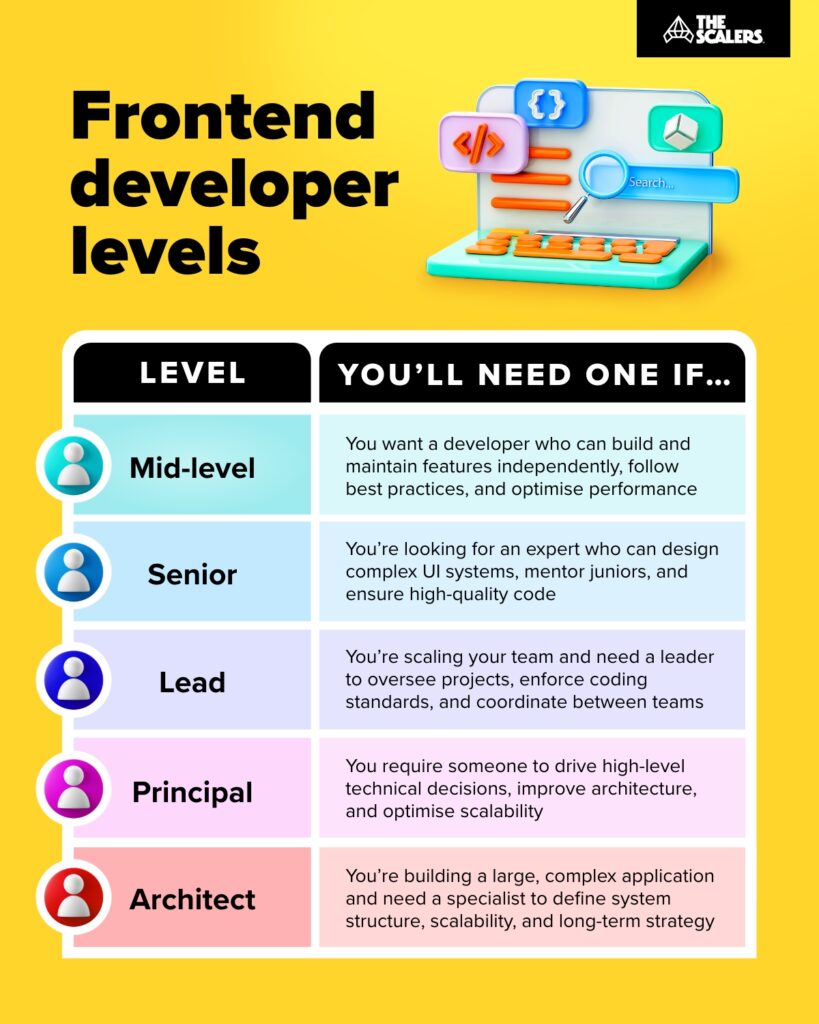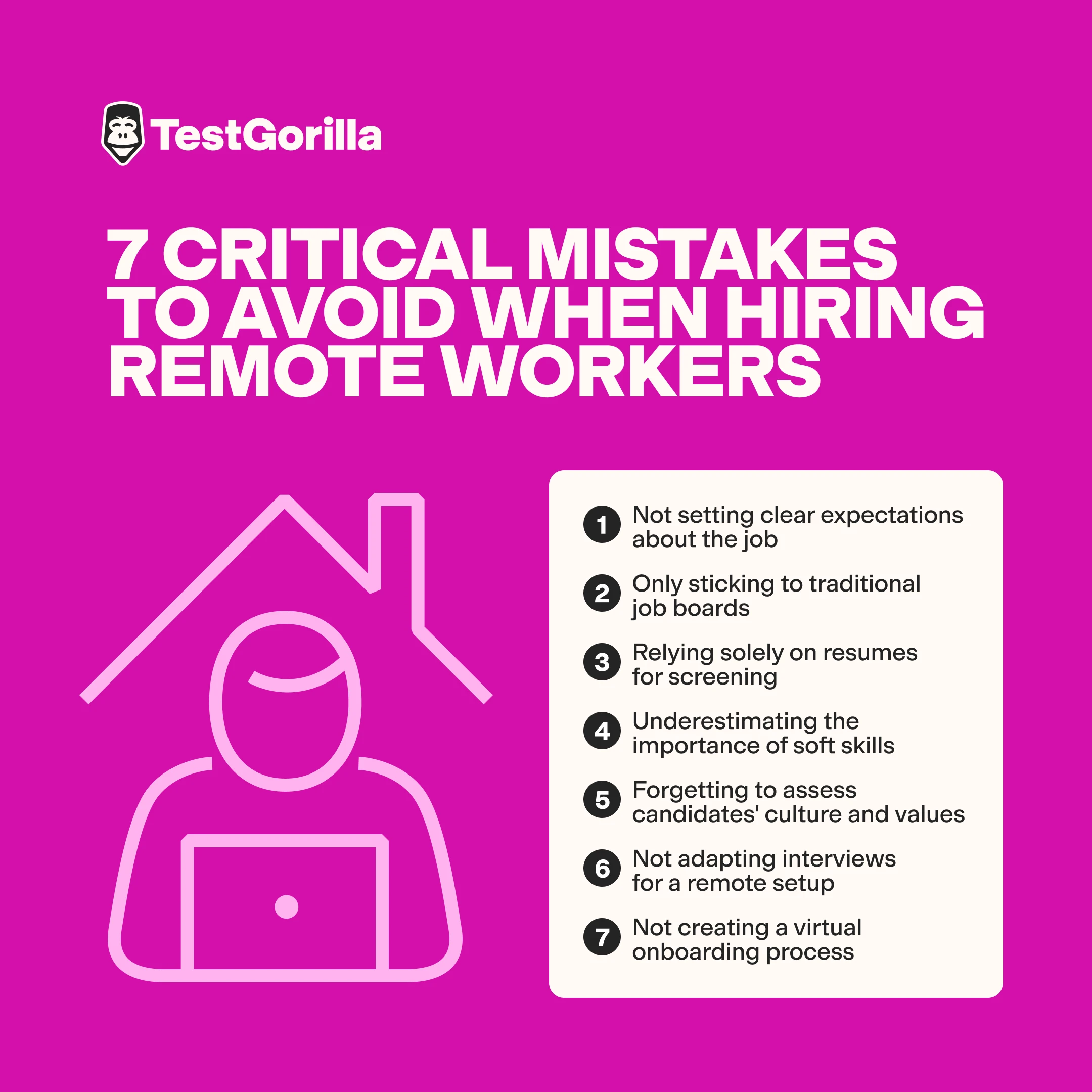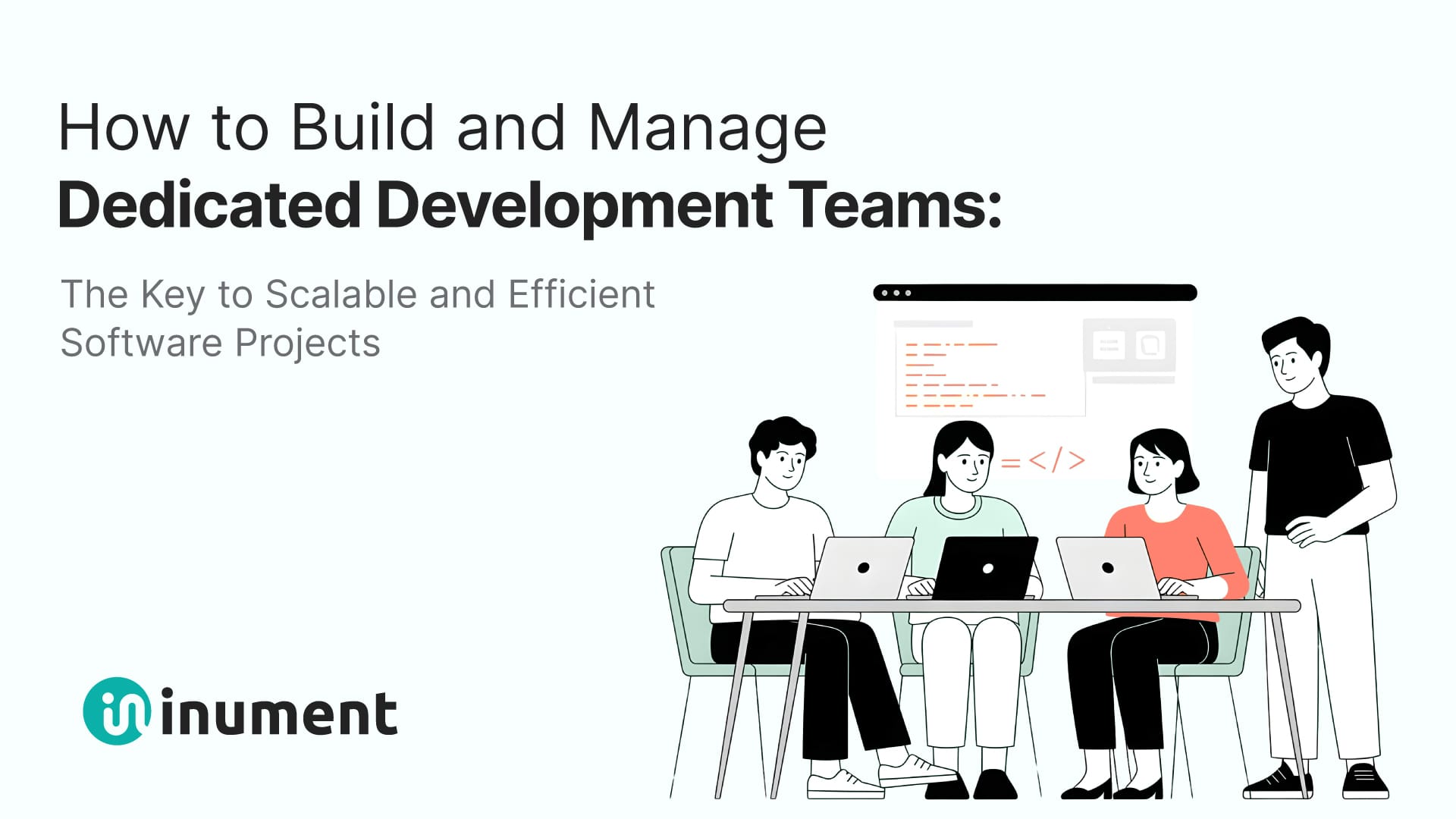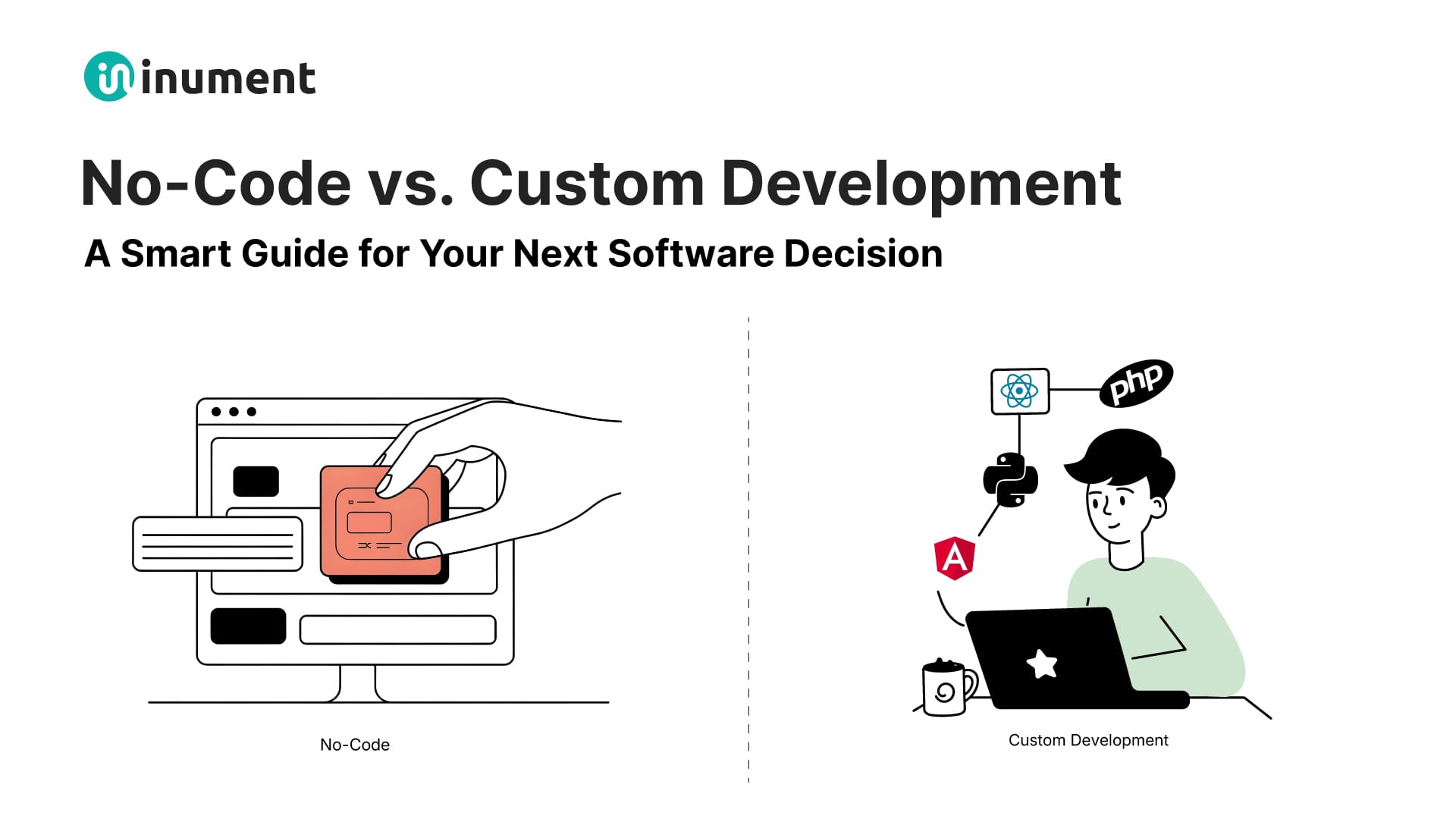The user interface is the part of your app or website that customers actually see and interact with. This means your front-end engineer is the face of your product, literally.
As a result, the quality of your front-end team directly impacts user experience, retention, and ultimately revenue. One bad hire, and your app’s user experience can crumble before it even launches.
Startups need engineers who can move fast, experiment, and iterate on an MVP, while enterprises need engineers who can maintain large, scalable applications without introducing technical debt.
The hiring process can feel overwhelming, but with the right approach, you can attract top talent, evaluate skills effectively, and onboard engineers who truly fit your business needs.
In this guide, we’ll break down the step-by-step process to hire the ideal front-end engineer for your business: covering everything from defining your needs and crafting a compelling job description to sourcing candidates, conducting interviews, and finally onboarding effectively.
Ready to hire a front-end engineer who elevates your product instead of slowing it down?
Let’s dive right in!
Understand the Role: What a Frontend Engineer Actually Does
A frontend engineer acts as the bridge between your product’s vision and what users actually experience. The JD of a frontend engineer goes beyond visuals.
They don’t just write code; they craft interfaces, optimize performance, and ensure every click, swipe, and scroll feels seamless. They also integrate with backend systems, handle API connections, and make sure features are fast, accessible, and bug-free.
In startups, they often wear multiple hats: UI designer, JavaScript wizard, and problem solver all in one. In enterprises, they focus on scalability, maintainability, and cross-platform consistency, ensuring large applications perform smoothly for millions of users.

In short, a frontend engineer is the face and first impression of your product, and hiring the right one can make or break your user experience. Choosing someone who understands both design principles and technical constraints ensures your product is not just functional, but also delightful to use.
How to Hire a Frontend Developer: Step-by-step
Hiring the right frontend developer doesn’t have to be a guessing game. By following a structured, step-by-step approach, you can identify top talent, evaluate skills effectively, and onboard developers who fit seamlessly into your team.
Here’s how you can choose the best frontend engineer that fits your specific business needs:
Step #1: Define Your Needs Before You Hire
Before posting a job or reviewing resumes, you need a clear understanding of what your project actually requires.
Are you building a fast-moving MVP, scaling a web platform, or enhancing an enterprise application?
The scope of your project will determine the level of experience, skill sets, and expertise your frontend engineer needs.
Start by identifying the technical skills required: HTML, CSS, JavaScript; specific frameworks like React, Angular, or Vue; and tools/platforms like Figma, GitHub, AWS, GPTs, VS Code, and Grunt are crucial for a modern-day front-end engineers.
Don’t forget accessibility, performance optimization, and responsive design as these are critical for delivering a seamless user experience.
Next, clarify the role expectations. Will your engineer work independently on features, collaborate closely with designers, or integrate heavily with backend developers?
Deciding on full-time, contract, or remote arrangements upfront will save headaches later.
Step #2: Crafting the Job Description That Attracts Top Talent
Next, you’ll need to craft a crystal clear Job Description (JD) for the role. A job description is more than a list of Frontend developer skills. It’s your first impression with potential candidates.
Done right, it draws the right people in; done wrong, it wastes time attracting unqualified applicants.
Start by breaking down the role clearly. List essential technical skills and explain why each skill matters.
For example, React might be needed for fast MVP iterations, while Vue could suit smaller projects requiring quick prototyping. Include soft skills in the JD too: problem-solving, communication, and collaboration are critical for remote or cross-functional teams.
Next, outline responsibilities and deliverables. Clarify whether the engineer will own features end-to-end, integrate with backend APIs, or work closely with UX/UI designers. This sets expectations and ensures candidates understand what success looks like in your team.

Don’t forget company culture and growth opportunities. Highlight your team’s values, mentorship programs, or chances to work on exciting projects.
Engineers want to see how they can grow, learn, and make a real impact, not just write code.
Once the JD is polished, distribute it through the right channels. Post on LinkedIn, Stack Overflow, GitHub Jobs, AngelList, and relevant developer communities.
Remember, a well-crafted JD isn’t just about listing requirements. It sells your team, sets expectations, and attracts candidates who can truly deliver.
You can also leverage employee referrals and consider Staff Augmentation Companies if you need to reach hard-to-find, specialized candidates.
Tailoring the distribution to where frontend engineers spend their time dramatically increases the quality and quantity of applicants. Let’s exp[lore more about them in the next section.
Step #3: Sourcing Candidates: Where to Find Top Frontend Engineers
Here’s the truth: Hiring a frontend engineer is anything but simple. Finding top-tier frontend engineers can feel like hunting for unicorns
But it doesn’t have to be!
The key is knowing where to look and how to evaluate talent efficiently. Tech company owners have several avenues to source quality candidates, each with its own benefits and best practices.
First, there’s the traditional job boards and online platforms. LinkedIn is still king for pinpointing candidates with the exact skills you need. Stack Overflow and GitHub Jobs are gold because you can see developers’ actual work: contributions, projects, even coding style.
For start-ups hunting for agile, innovative engineers, AngelList connects you with talent who thrive in fast-paced environments.
Whether you are hiring frontend talent for start-ups, or trying to extend your enterprise team with the right talent, there are numerous remote hiring platforms where you can find pre-vetted professionals.

Next, don’t underestimate the power of community and networking. Tech meetups, hackathons, online forums, and employee referrals often lead to high-quality, motivated engineers who aren’t just looking for a paycheck, but also are passionate about what they build.
For companies seeking rapid, reliable access to pre-vetted talent, partnering with a trusted provider can save time and reduce hiring risk. If you want to skip the legwork and get pre-vetted, ready-to-go talent, Inument is your secret weapon.
Inument specializes in curating top-of-the-shelf frontend engineers and dedicated development teams who integrate seamlessly with your team, align with your culture, and hit the ground running.
No guesswork, no wasted time; just skilled professionals ready to deliver.
This multi-channel approach increases your chances of finding a frontend engineer who can hit the ground running, deliver impact fast, and help your product shine.
Step #4: Screening Candidates Effectively
You’ve found some great candidates, but now the real work begins: screening. This is where you separate the good from the great and ensure you’re not wasting time on mismatched profiles.
Start by reviewing their portfolio or GitHub. A strong frontend engineer doesn’t just talk the talk, they’ve got a portfolio full of live projects and code that speaks for itself. Check for responsiveness, quality of work, and whether they’re following best practices (like accessibility and performance).
Then, dive into their soft skills.
Sure, they might be a wizard with React, but
- How do they communicate complex concepts?
- Can they explain their decisions clearly?
- Do they collaborate well with others or do they need constant hand-holding?
A frontend engineer is just as much about team fit as they are about technical skills.
Finally, watch out for red flags. If they can’t articulate how they solved a tough problem or avoid talking about past projects, that’s a warning sign. A good frontend engineer should be able to showcases their contributions, not just the outcome.
Interview Questions That Actually Work. Once you’ve narrowed down your list of candidates, the interview process becomes key to uncovering the full picture.
Here are a few frontend engineer interview questions that help you evaluate both technical and soft skills:
- Can you walk me through a project where you optimized the performance of a frontend application? — To test their problem-solving skills and ability to balance performance and user experience.
- How do you approach debugging a frontend issue? — To evaluate their analytical thinking and how they handle real-world problems in coding.
- Tell me about a time when you had to collaborate with backend engineers. How did you ensure smooth integration? — How well they communicate with cross-functional teams and navigate the integration process.
- How do you stay up-to-date with the latest frontend technologies and trends? — To check if they are committed to continuous learning and staying relevant in the rapidly changing frontend landscape.
- Can you explain a complex technical concept to someone who isn’t a developer? — To test their communication skills and ability to convey technical information clearly.
These interview questions will help you not only assess technical proficiency but also understand how well candidates will fit into your team dynamic.
A skilled frontend engineer should be able to communicate clearly, solve problems independently, and collaborate effectively.
Remember, coding skill is important, but so is critical thinking and teamwork.
Step #5: Final Evaluation and Onboarding
After narrowing down your candidates and putting them through the paces of interviews and assessments, it’s time for the final evaluation: a small but powerful assessment test before making your decision. Remember, onboarding outsourced talent is harder than you think.
So, instead of just relying on a portfolio, give your candidate a small project or coding test that’s aligned with the type of work they’ll be doing. This can range from solving a UI/UX challenge, improving the performance of a demo application, or integrating a simple feature. But don’t make it too long.

Keep the test focused on real-world tasks that’ll give you a glimpse of how they think and problem-solve. Look for clean, efficient code and how they approach scalability.
This test gives you one last chance to confirm that the candidate not only has the skills but can also apply them in a real-world scenario.
The goal is to evaluate:
- Technical skills: How well do they write clean, maintainable code?
- Problem-solving abilities: How do they approach challenges and optimization?
- Speed and efficiency: Can they work within deadlines while maintaining quality
- Attention to detail: Are they thorough in their approach and follow best practices?
Onboarding the Right Way: How to Extend your Frontend Team
Once you’ve made your hire, the real work begins: Incorporating that talent into your internal environment. A structured and effective onboarding process helps the new engineer understand your company culture, tools, and workflow, making the transition smooth and setting them up for success.
Here’s how to approach frontend developer onboarding the right way:
- Introduce them to the team and culture: Take time to introduce your new hire to the team, share your company’s values, and explain how you collaborate as a remote team. This is key to making them feel like part of the family right away.
- Provide all necessary tools and resources: Make sure they have access to your project management tools (like Jira or Trello), code repositories (GitHub, GitLab), and any other platforms you use to ensure they hit the ground running.
- Define clear expectations: Set the tone by explaining the first 30, 60, and 90-day goals, so they know exactly what’s expected. Make sure they understand how their work aligns with the team’s broader objectives.
- Assign a mentor: Pair them with a senior team member who can guide them through initial tasks and act as their go-to person for any questions. This helps them get up to speed faster and creates a smoother integration into your team.
A successful onboarding process isn’t just about filling out forms and setting up accounts. It’s about making the new hire feel welcome, supported, and invested in the team’s success.
With a well-planned assessment test and a thorough onboarding process, your new frontend engineer will be ready to deliver quality work, contribute to the team, and integrate seamlessly into your company’s culture.
Common Pitfalls to Avoid When Hiring a Frontend Engineer
Hiring a frontend engineer sounds simple enough, right?
But make one wrong move, and you could end up with a mismatch that costs you both time and money.
Let’s break down the common mistakes that can derail the hiring process, and how to avoid them.
1. Getting Fixated on Technical Skills
It’s easy to get caught up in technical skills and forget about culture. Misalignment of values and communication styles can create tension, slow down decision-making, and increase turnover.
Don’t get me wrong, technical expertise is a must; but front-end engineers also need to be strong communicators, problem-solvers, and creative thinkers.
A frontend engineer might have the perfect technical qualifications, but if they don’t fit into your team dynamic, they’re going to struggle with collaboration and communication. A developer who can write perfect code but can’t communicate effectively with designers or backend teams will become a bottleneck.
So, during interviews, assess not only their technical expertise but also their soft skills: how they collaborate, communicate, and solve problems within a team environment. Ask for real-life examples of how they’ve worked across teams to solve problems.
2. Rushing the Hiring Process
We get it: finding the perfect candidate can feel like a race against time, but rushing the process can lead to hiring someone who’s just not the right fit.
You may find yourself in a situation where you have to re-hire in a few months, costing you both time and money. This will result in wasted resources, dropped deadlines, and a disruptive cycle of hiring and firing.
To avoid this issue, give yourself time to evaluate candidates thoroughly, from technical tests to in-depth interviews. Be sure to check references and validate their experience.

3. Not Testing Practical Skills
A candidate might have a killer resume and great answers in interviews, but without seeing their skills in action, you won’t know if they can really deliver on your project needs.
Hiring someone who can’t execute the way they claim, leading to rework, slowdowns, and frustration on both sides.
Here’s how to solve this: give candidates practical coding tests or test projects that mirror real tasks they’ll face on the job. This helps you see how they approach problem-solving and how they write maintainable, high-quality code.
4. Ignoring Long-Term Growth Mindset
Front-end engineering isn’t just about getting things done quickly. It’s about building something sustainable, scalable, and adaptable as your business grows. Hiring based on short-term needs might lead to hiring someone who can’t grow with you.
A team member who doesn’t evolve with your business can cause technical debt and be a drag on scalability in the long run.
So, look for growth potential: is the candidate willing to learn, adapt, and scale with the company? Discuss their career trajectory and how they see themselves contributing to long-term goals.
The Takeaway? Don’t settle for just any developer. Build a team that truly aligns with your goals. Contact Inument today to find pre-vetted frontend engineers who fit seamlessly into your team and deliver exceptional results.
Wrapping Up: How to Hire the Right Frontend Engineer with Confidence
Hiring the right frontend engineer doesn’t have to be a gamble. With the right process in place, you’ll be able to identify top talent who fits seamlessly into your team. The process includes components like clearly defining your needs, crafting a compelling job description, and screening candidates carefully.
Remember, it’s not just about technical skills. The best frontend engineers not only bring technical expertise, but also have the soft skills to collaborate, innovate, and grow with your business.
Cultural fit, problem-solving abilities, and clear communication are just as important for success.
Inument specializes in connecting companies with top-tier, pre-vetted frontend engineers who integrate smoothly into your team, whether you’re building an MVP, scaling a product, or optimizing a large web platform.
Our engineers don’t just build; they help you achieve your business goals, innovate faster, and deliver quality results on time.
Ready to stop guessing and start building with the best frontend talent?
Reach out to Inument today and let us help you hire the right frontend engineer who will elevate your product and help your team thrive.
About the author
Zahir Rahat
Related Insights

Scaling Smart: How to Hire PHP Developers Who Drive Real Results
18 November 2025

Communication Without Borders: How to Build and Manage Strong Global Teams Across Cultures
04 November 2025

How to Build and Manage Dedicated Development Teams: The Key to Scalable and Efficient Software Projects
10 September 2025

No-Code vs. Custom Development: A Smart Guide for Your Next Software Decision
08 September 2025

How to Choose the Right Outsource Development Team for Streamlined Success
28 August 2025

